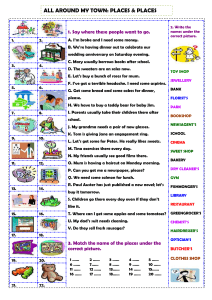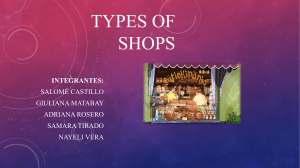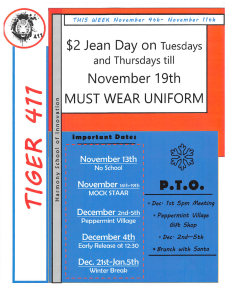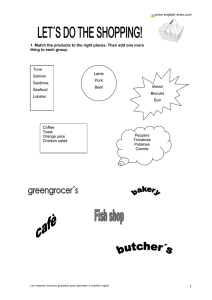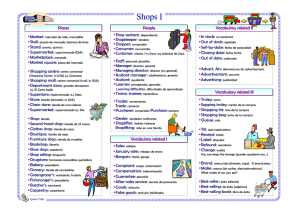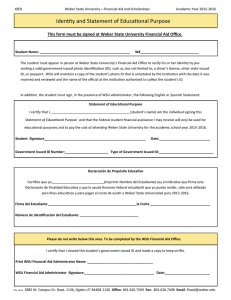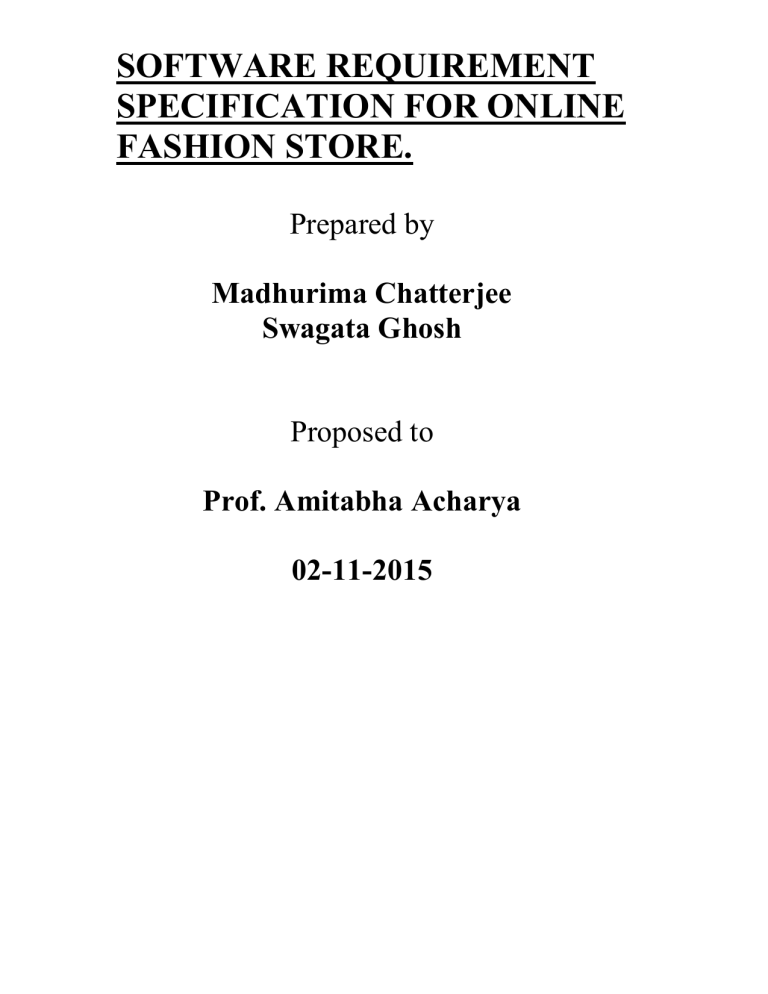
SOFTWARE REQUIREMENT SPECIFICATION FOR ONLINE FASHION STORE. Prepared by Madhurima Chatterjee Swagata Ghosh Proposed to Prof. Amitabha Acharya 02-11-2015 Table of Contents 1. Introduction 1.1 Purpose 1.2Scope 1.3Audience, Definitions, Acronyms and Abbreviations 1.3.1 Audience Definitions 1.3.2 Acronyms and Abbreviations 1.4References 1.5Technologies to be used 1.6Overview 2. Overall Description 2.1 Product Perspective 2.2 Product Functions 2.3 User Characteristics 2.4 Constraints 2.5 Operating Environment 3.Specific Requirements 3.1 Functional Requirements 3.2 Non-functional Requirements 3.2.1 Performance Requirements 3.2.2 Safety Requirements 3.2.3 Security Requirements 3.2.4 Error handling 4. Interfaces and Possible Scenarios 4.1 Customer’s Interface 4.1.1 Login 4.1.2 Registration Interface 4.1.3 Personal Data Editing 4.1.4 Search 4.1.5 Add as favorites 4.1.6 Cart 4.1.7 Payment 4.1.8 Support 4.2 Interfaces for Shop Owner 4.3 Interfaces for Sales Manager 4.4 Interfaces for Accounts Manager 4.5 Interfaces for Purchase Manager 4.6 Interfaces for Customer care 4.7 Interface for Administrator 1. Introduction 1.1 Purpose The Online Fashion Store (OFS) web application is intended to provide complete solutions for vendors as well as customers through a single gateway using the internet as the sole medium. It will enable vendors to setup online fashion shops (garments, accessories etc.), customer to browse through the shop and purchase them online without having to visit the shop physically. The administration module will enable a system administrator to approve and reject requests for new shops and maintain various lists of shop category This document is meant to discuss the features of OFS, so as to serve as a guide to the developers on one hand and a software validation document for the prospective client on the other. 1.2 Scope Initial functional requirements will be: Secure registration and profile management facilities for Customers Browsing through the e-store to see the items that are there in each category of products like garments (ethnic , western etc) and accessories. Adequate searching mechanisms for easy and quick access to particular products and services. Creating a Shopping cart so that customers can shop ‘n’ no. of items and checkout finally with the entire shopping carts. Customers can add or delete items in the cart. Regular updates to registered customers of the OFS about new arrivals. Uploading ‘Most Purchased’ Items in each category of products in the Shop. Strategic data and graphs for Administrators and Shop owners about the items that are popular in each category and age group. Maintaining database of regular customers of different needs. Shop employees are responsible for internal affairs like processing orders, assure home delivery, getting customer's delivery-time feedback, updating order's status and answering client's queries online. Feedback mechanism, so that customers can give feedback for the product or service which they have purchased. Also facility rating of individual products by relevant customers. Adequate payment mechanism and gateway for all popular credit cards, cheques and other relevant payment options, as available from time to time. Initial non functional requirements will be: Secure access of confidential data (user’s details). 24 X 7 availability Better component design performance at peak time to get better Advertisement space where it will effectively catch the customer’s attention and as a source of revenue. In addition to the above mentioned points, the following are planned to be delivered if deemed necessary: Warehousing within the very ambits of the project More payment gateways. Dynamic price model by which prices can be changed based on demand and supply Each customer can build a “scrapbook”, where they can have a collection of garments and accessories to create a specific look basing on inbuilt templates. The scrapbook created will be visible to other users who can like and/or comment on the style. This list is by no means, a final one. The final list will be dictated by implementation constraints, market forces and most importantly, by end user demands. 1.3 Audience Definitions, Acronyms and Abbreviations 1.3.1 Audience Definitions The intended readers of this document are the developers of the site, testers, website owners, managers and coordinators. 1.3.2 Acronyms and Abbreviations Acronym OFS JAVA EE HTTP HTTPS TCP/IP Meaning Online Fashion Store Java Enterprise Edition 5 Hypertext Transfer Protocol Secure Hypertext Transfer Protocol Transmission Control Protocol/Internet Protocol 1.4 References IEEE 830-1998 standard for writing SRS document. Fundamentals of Software Engineering, 2nd ed. by Rajib Mall. 1.5 Technologies to be used Programming languages: JAVA EE: Java Enterprise Edition is a programming platform— part of the Java Platform-for developing and running distributed multi-tier architecture Java applications, based largely on modular software running on an application server. components HTML, XML: Hyper Text Markup Language and Extensible markup Language are the predominant markup languages for web pages. It provides a means to describe the structure of text-based information in a document and to supplement that text with interactive forms, embedded images, and other objects. JavaScript: A client side scripting language used to create dynamic web content and user interface. Tools & Development Environment Apache Tomcat 6.0.18 Server: Apache Tomcat is a Servlet container developed by the Apache Software Foundation (ASF). Tomcat implements the Java Servlet and the JavaServer Pages (JSP) specifications from Sun Microsystems, and provides a "pure Java" HTTP web server environment for Java code to run. ECLIPSE J2EE: Eclipse is a toolkit which is designed for the creation of complex projects, providing fully dynamic web application utilizing EJB’s. This consist of EJB tools , CMP ,data mapping tools & a universal test client that is designed to aid testing of EJB’s. 1.6 Overview The rest of this SRS is organized as follows: Section 2 gives an overall description of the software. It gives what level of proficiency is expected of the user, some general constraints while making the software and some assumptions and dependencies that are assumed. Section 3 gives specific requirements which the software is expected to deliver. Functional requirements are given by the use case. Section 4 describes the various interfaces and possible scenarios. 2. Overall Description 2.1 Product Perspective OFS is aimed towards the vendors who want to reach out to the maximum cross-section of customer and common people who can be potential customer. This project envisages bridging the gap between the seller, the retailer and the customer. OFS should be user-friendly, ‘quick to learn’ and reliable software for the above purpose. OFS is intended to be a standalone product and should not depend on the availability of other software. It should run on both UNIX and Windows based platform. 2.2 Product Functions User: Administrator Functions: The Administrator is the super user and has complete control over all the activities that can be performed. The application notifies the administrator of all shop creation requests, and the administrator can then approve or reject them. The administrator also manages the list of available product categories. The administrator can also view and delete entries in the guestbook. User: Shop Owner Functions: Any user can submit a shop creation request through the application. When the request is approved by the Administrator, the requester is notified, and from there on is given the role of Shop Owner. The Shop Owner is responsible for setting up the shop and maintaining it. The job involves managing the sub-categories of the items in the shop. Also, the shop owner can add or remove items from his shop. The Shop Owner can view different reports that give details of the sales and orders specific to his shop. The Shop Owner can also decide to close shop and remove it from the website. User: Customer/Guests Functions: A Customer can browse through the shops and choose products to place in a virtual shopping cart. The shopping cart details can be viewed and items can be removed from the cart. To proceed with the purchase, the customer is prompted to login. Also, the customer can modify personal profile information (such as phone number and shipping address) stored by the application. The customer can also view the status of any previous orders, and cancel any order that has not been shipped yet. User: Employees Functions: Purchase department under a Purchase manager to overlook purchasing activities if warehousing needs arise. Functions: Sales department under a Sales manager who will look after the sale of products and services, the most important activity. Functions: Accounts department under an Accounts manager to look after the accounting activities of the enterprise 2.3User characteristics The user should be familiar with the Shopping Mall related terminology like Shopping cart/Checking out/Transaction etc. The user should be familiar with the Internet. 2.4Constraints There is no maintainability of back up so availability will get affected. Limited to HTTP/HTTPS. Real-life credit card validation and Banking system is not implemented. No multilingual support 2.5 Operating Environment The OFS is a website that shall operate in all famous browsers, for a model we are taking Microsoft Internet Explorer versions 7.0, 8.0 and 9.0 . 3. Specific Requirements 3.1 Functional Requirements 1. Administrator: Database Management: Control the database and keep track of all records of customers and employee details. Contact and Giving Permission to Vendors: Contact with the vendors and give permission to sell their product under the site after testing the product’s quality. View all details: View the details of all employees and control the whole site. Advertising the Site: Responsible for making advertisements for the site. 2. Customers: Login: Customers must have a valid login id to enter into the site. Registration: New users can sign up by creating new ID. View and edit Own Details: Can view/edit his personal details, payment details, and details about services provided. Choosing and comparing products: Can view all available products and can compare them and make a choice for purchasing products. Purchasing: Can purchase any product through valid credit card. Giving Feedback to Customer Care: Can give feedback to the 24X7 Customer Care Service center about their impression for the site and services. Logout: Customer must logout of the site after purchasing products. 3. Visitors: Visiting the Site: Can only visit the site without registration. Register 4. Shop Owner: Taking Permission from Administrator: Vendors must take permission from the Administrator for selling their products under the site. Administrator will test product’s quality according to its market price to permit vendor for selling purpose. Consulting with Administrator: Can consult with the Administrator regarding product’s quality and advertisements. Advertising Vendor’s Own Products: Responsible for making advertisements of his products, but the site will not be responsible for any kind of advertisements about products. 5. Sales Manager: View customer details: View the personal details of the customer. Managing Sales to Customers: Responsible for properly allocating the selected product according to the customer’s choice and delivering product to the customer. View Product Stocks: Keep track of each product item’s stocks for selling purpose. Contacting with Administrator: Responsible for informing administrator when any product item’s stock goes under the minimum level. 6. Purchase Manager: Consulting with Administrator: Taking permission from the Administrator for the product to be purchased from vendor. Product Stock Management: Responsible for managing stocks of each product items. 7. Accounts Manager: Regulating Payments: Keep track of all the payment transactions made by the customers and update the payment information. Consulting with Banks: Responsible for contacting the banks for the validation of the a/c number provided by the customer while purchasing and make the transaction from the given a/c. Consulting with Administrator: Consult with the Administrator about the payment details of the customers for the updating of the database. 8. Customer Care: Getting Feedback from the Customers: Responsible for receiving complaints, queries and feedback from the customers. Providing Solutions to Customers: Provide feasible solutions to the customers on their complaints and queries. 3.2 Non-functional Requirements 3.2.1 Performance Requirements The system shall accommodate high number of items and users without any fault. Responses to view information shall take no longer than 5 seconds to appear on the screen. 3.2.2 Safety Requirements System use shall not cause any harm to human users. 3.2.3 Security Requirements System will use secured database Normal users can just read information but they cannot edit or modify anything except their personal and some other information. System will have different types of users and every user has access constraints. 3.2.4 Error handling OFS shall handle expected and non expected errors in ways that prevent loss in information and long downtime period. 4. Interfaces Possible Scenarios 4.1 Customer’s Interface: 4.1.1 Login: This interface will consist of two compulsory fields namely, “User Name” and “Password”. There will also be options for “New User’s Registration” which will redirect to “Registration” page and a “Forgot Password” option in case a user forgets the password. If the password entered is correct the Main User Interface opens up else an error message is displayed. 4.1.2 Registration Interface The user will enter his personal details like Name, User Name, Password, Date Of Birth, Address, Registration Type, etc. Users will be warned about any mistakes on data format or any other constrains by validation notes and error messages. When the button "save" button is clicked, the server will check if the username or email is already taken and alert the user. If everything is entered correctly and saved a new user will be created. 4.1.3 Personal Data Editing If any member wants to change his personal information he can enter his profile by clicking on his name at the top right of the main page and he will be directed to the personal details editing page. 4.1.4. Search The customer can enter the type of item he is looking for and the specifications he is interested in them he can click on “Search”. User can also use advanced search for more options. For eg: the user can filter the results basing on various aspects such as size, color , material, brand etc and also they can sort the product display according to their wish (relevance, price in ascending or descending, popularity) 4.1.5 Add as favourites The user can shortlist his/her favourite item as a list for future reference. 4.1.6 Cart This will be a space for the customer where he/she can store the items he/she whishes to buy. The user can also remove items from cart prior to checkout. Once the user decides to buy the items it cart, the user is directed to the payment page for making payment. 4.1.7 Payment The user given options with various modes of payment (online payment through credit/debit cards, via net or mobile banking or cash on delivery) out of which he chooses one. The chose mode of transaction is carried therefore by proper verification and authentication of bank details. 4.1.8 Support The user can contact with the customer care via phone call or via messages. User can ask for an assistance or can give feedback on a particular aspect. 4.2 Interface for Shop owner The shop owner will have a different login id using which he can access his account that contains a control panel that allows him to contact the administrator, set up/ maintain shop etc. This control panel will allow the shop owner to do the following things: Request the admin for a permission to set up a shop. Set up the catalog for his shop and upload it so that the admin can make it visible in the website. Add/Remove items. The corresponding changes will be done in the database by the Admin. Create advertisements for his products. Generate a sales report. Discontinue the shop. 4.3 Interface for sales manager The sales manager will have a different login id using which he can access his account that contains a control panel that allows him to contact the administrator and manage sales. This control panel will allow the sales manager to do the following things: Maintain the product database so that the same or different kinds of products are properly maintained with their unique id, so that when a customer orders a product, the same product gets allocated without causing any inconsistency to the database. Generate current order shipping status status and upload it time to time and provide an expected delivery date. In case a user cancels a particular order, the same is taken care of by the sales manager and proper order status is changed and reflected back. Promote sales by associating products with offers and discounts. Contact the admin. 4.4 Interface for Accounts manager The Accounts manager will have a different login id using which he can access his account that contains a control panel that allows him to contact the administrator and manage various transactions and accounts. This control panel will allow the Accounts manager to do the following things: Keep track of payment transactions differentiated by their unique id and associated with corresponding user and update payment information. Contact he bank for account validation. Contact Administrator. 4.5 Interface for purchase manager The Purchase manager will have a different login id using which he can access his account that contains a control panel that allows him to contact the administrator and manage various purchases for the warehouse. This control panel will allow the Purchase manager to do the following things: Whenever the stocks in warehouse goes under a critical value, the system alerts the purchase manager about it and he contacts the administrator seeking permission to make a purchase from a particular vendor. Contact a vendor for making a purchase. 4.6 Interface for customer care A customer care employee will have a different login id using which he can access his account that contains a control panel that allows him to contact the administrator and manage various queries and feedbacks from the customer. This control panel will allow a customer care employee to do the following things: Read feedbacks from a particular customer and let the administrator know about it. Provide solutions to the queries posted by the customer. Contact administrator. 4.7 Interface for Administrator The administrator will have a different login id using which he can access his account that contains a control panel that allows him to contact each and every aspect of the system. This control panel will allow the administrator to do the following things: Access and view the customer database. Access and view the database of vendors, go through their requests for shop creation and reply them back with acceptance /dismissal of their request. Access and view the employee database and manage them. Make the catalog (that is visible to the customers), taking the design of corresponding shop owners in consideration . Grant/ Reject purchase permit to purchase manager. Manage employee salary. Contact employees.
